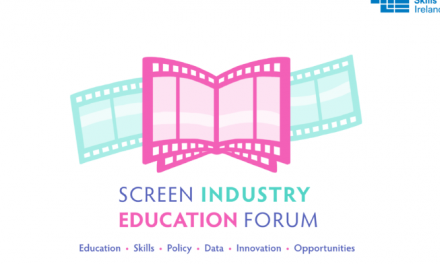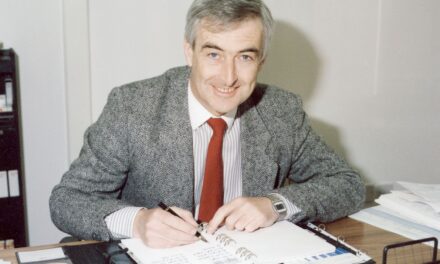Whereas narratives of homosexuality, bisexuality, transgenderism, and transsexuality often revolve around the idea of “coming out,” the relationship between speech and silence, and sexual self-identification, asexual characters do not often “name” themselves as such (Sinwell, 2014, p.338). These characters are marked as desexualised bodies or ace-coded, rather than asexual subjectivities, and have a limited screen space. (Akdağ, 2024). Desexualisation functions to render characters coming from marginalized groups such as people with disabilities, lesbians and transgender people, children and older adults, people of size, and some racialized people as “asexual” by default—misusing the term “asexuality” in the process. (Pryzblo, 2019, p.15). These characters are represented or coded as asexual not because they do not experience sexual attraction, but rather because they are not sexually attractive; they are not allowed to have a sexuality because, if they were, normative codes of sexual desirability would be threatened (Sinwell, 2014, p.335). However, in 2011, the terms “unassailable asexual” and “gold star asexual” (vs. spectacular asexual as fetish object) were coined to refer to the asexual who presents as normative—able-bodied, trauma-free, cisgender, conventionally attractive, sociable—and thus theoretically cannot have his or her asexuality denounced through pathological means. (Cerankowski, 2014, p.296). That’s why the growing number of asexual representations in streaming media should be re-examined, with an awareness of the dangers of ace-coding and ace-baiting strategies.
Since introducing the Ace Cake Test at the 2nd International Gender for Excellence in Research Conference 2023, I extended my research on asexual tropes in the legacy of television studies and here, I am proposing eleven common asexual tropes. (1) Fresh of The Boat, (2) Married to Job, (3) Nerds/Genius, (4) Sidekicks/Henchman, (5) The Guru/The Martial Arts, (6) Lonely/Autistic/Mental Health Issues, (7) Spinster/Old Maid, (8) Psycho/Serial Killer/Slasher, (9) Villains, (10) Non-Human/Alien, (11) Childish/Peter Pan Syndrome. Every single asexual trope is deeply rooted in one or more of normative structures, namely, compulsory sexuality (Gupta and Cerankowski, 2015), compulsory heterosexuality, amatonormativity[1] (Brake, 2012, p. 88), singlism and martimania (Bella DePaolo, 2011, p. 15), eugenistic policies and model minority myth. All these ace-coded characters or tropes are, solely echoing characters’ attitudes towards sexual activity, rather than attraction. (Akdağ, 2024). A large proportion of these ace coded characters are male and – ironically – are encapsulated as having something wrong with their gender identity. Canonized examples of asexuality include characters and representations such as Todd Chavez on BoJack Horseman, Jughead Jones in the comic series Archie (not the one in Riverdale!) Doctor Who, Sheldon Cooper on The Big Bang Theory, Sherlock Holmes, House’s episode, titled ‘Better Half’ (Gupta and Cerankowski, 2017) and the first asexual character featured on mainstream TV, Gerald Tippett, on the New Zealand soap opera Shortland Street (Pryzblo, 2019, p.15). Unfortunately, nearly all these asexual characters are encapsulated as apothisexual which refers to an asexual person who is strictly repulsive to sex. (Akdağ, 2024). Although there is a growing number of explicitly confirmed asexual characters in streaming originals, these characters are not depicted with the legacy of split attraction model[2]. In other words, romantic attraction and sexual attraction should coincide with each other and every single asexual character seems to be aromantic apothisexual.
The character Elijah, introduced in Season 6 of the Netflix original series Big Mouth (2017-2024), provides a valuable opportunity to explore the potential for -affirmative- asexual representations in streaming media. In the inaugural episode titled “The Hookup Night”, Elijah was first seen on crosswalk to Bridgerton Middle School, from one of horniest character Missy’s point of view. Elijah is a black Christian teenager who comes from a black church school in Virginia. On the other side, Missy has democrat and spiritual parents who are strongly opposed to idea of -institionalized- religions. The first axis of discussion is the depiction of Elijah as a reluctant Christian having problems with dating and sexual encounters with others. It is also quite problematic that black asexual character Elijah has only have chance to be loved by allosexual – or sexual- black character, Missy.
Ongoing internal dilemma for Elijah is whether he has supposed to step in sexual intimacy -presented as an ultimate form of love- with Missy or strictly supposed to follow celibacy/sexual abstinence due to religious preferences. But Elijah’s feelings about physical affection don’t stem solely from being taught about “purity” and “temptation” from an early age (Allyson, 2023). Bob Marley like black, chilling Jesus Christ figure appears as a saviour when Elijah is not quite sure to have sensual contact with Missy. When Elijah self-realizes that his reluctance is nothing to do with the God’s road, two hormone monsters named Joe and Gill have been introduced and tell every single detail of sexual encounters with himself -reminding the term ‘monosexual’ who only masturbates- and others. The second axis of discussion is arising from the depiction of Elijah’s hormone monsters: they are portrayed as fat, old and bald, -shortly unattractive- and gay coded.
Unlike, Elijah has no love bugs, but why? He has his own version of the butterflies-in-the-stomach story in which aesthetic attraction to Missy seems to be prevalent! In the aftermath of having conversation with his explicitly confirmed asexual, single, cool auntie Amber, in Episode 8 titled ‘Asexual Healing’, it is healing to hear Elijah ask hopefully, “So there’s nothing wrong with me? Maybe I’m just asexual?”. That doesn’t solve everything for Elijah. (Allyson, 2023). Some asexual people may have an openly accepting attitude towards sex in society at large while not being open to having sex themselves (AVEN, n.d.), Elijah was one of them. Elijah quickly starts wondering about coming out to Missy and worries that she might break up with him once she knows he doesn’t want to go any further than holding hands… (Allyson, 2023).
Enes Akdağ is an Istanbul-based filmmaker and a Ph.D. candidate in Communication Studies at Kadir Has University. He holds an M.A. in Media and Communication Studies and a B.A. in Political Science and International Relations. His up-to-date research interests lie in the fields of film industries, new cinema history, memory studies, queer cinema. He has been working as line producer, at Sapiens Production Company. He recently joined the New Media and Communication Department of Üsküdar University as a research assistant.
References
Akdağ, E. (2024, May 13). Ace Cake Test: An intersectional Approach to Representations of Asexual Spectrum, in Transnational Video-on-Demand Culture. Cinema and Social Justice Project, Social Justice. https://cinemasocialjustice.org/2024/05/13/ace-cake-test/
Allyson. (2023, August 26). Asexual Sighting: Elijah (Big Mouth). Fallen Rocket. http://fallenrocket.blogspot.com/2023/08/asexual-sighting-elijah-big-mouth.html
Aromantic-spectrum Union for Recognition, Education, and Advocacy Team. (2019, August 2). Splitting Attraction: A History of Discussing Orientation. https://aromanticism.org/en/news-feed/splitting-attraction-history-j4y96
Brake, E. (2012). Minimizing Marriage: Marriage, Morality, and the Law. Oxford University Press.
Cerankowski, K. J. (2014). Spectacular Asexuals: Media Visibility and Cultural Fetish. In K.J. Cerankowski & M. Milks (Eds.), Asexualities: Feminist and Queer Perspectives (pp. 286-327). Routledge.
DePaulo, B. (2011). Singlism: What It Is, Why It Matters, and How to Stop It. DoubleDoor Books.
Gupta, K., & Cerankowski, K. J. (2017). Asexualities and Media. In C. Smith, F. Attwood, & B. McNair (Eds.), The Routledge Companion to Media, Sex and Sexuality. Routledge.
Przybylo, E. (2019). Erotics and Asexuality: Thinking Asexuality, Unthinking Sex. In E. Przyblo (Ed.), Asexual Erotics: Intimate Readings of Compulsory Sexuality (pp. 1-33). The Ohio State University Press.
Sinwell, S.E. S. (2014). Aliens and Asexuality: Media Representation, Queerness, and Asexual Visibility. In K.J. Cerankowski & M. Milks (Eds.), Asexualities: Feminist and Queer Perspectives (pp. 328-350). Routledge.
The Asexual Visibility and Education Network. (n.d.). Asexuals and Attitudes Towards Sex. https://asexuality.org/?q=attitudes.html
Footnotes
[1] Amatonormativity wrongly privileges the central, dyadic, exclusive, enduring amorous relationship associated with, but not limited to, marriage (Brake, 2012, p. 90).
[2] People have criticized the SAM for being too specific, saying that the idea of the SAM as a rigid split doesn’t allow for a grey area between attractions (Aurea Team, 2019).







